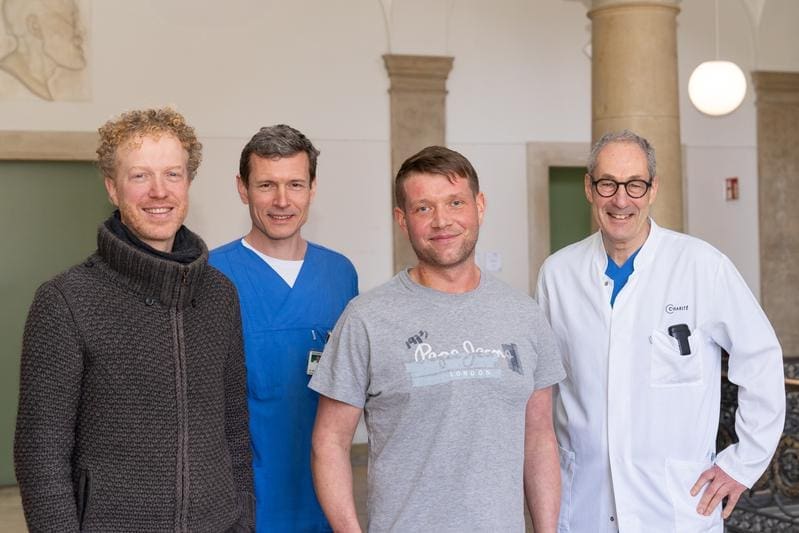Globally unique heart valve prosthesis implanted at Charit├®’s German Heart Center
A new type of heart valve prosthesis made from the body’s own tissue has been implanted for the first time at Charit├®’s German Heart Center (DHZC ). This globally unique technology promises almost unlimited durability and can adapt to the body’s growth in children with congenital heart valve defects, which could avoid stressful follow-up operations.
Heart valve defects are common heart diseases that affect around 160,000 children worldwide every year, and around 800 newborns in Germany. Conventional prostheses made from animal tissue are only durable to a limited extent and do not grow with children, which requires regular open heart surgery. Since 2010, a team led by PD Dr. med. Boris Schmitt at the DHZC has been researching a solution: heart valves made from the body’s own tissue that are accepted by the immune system and are capable of growth.

In the new method, tissue is removed from the patient’s pericardium, formed into a valve and fixed in a stent. This is inserted into the heart via a catheter under X-ray control, without open heart surgery. The procedure only takes a few hours. The body’s own tissue is not rejected, remains functional and could adapt to the body’s growth in children, as a special, dissolving stent is used.
The technology, developed under the leadership of Prof. Felix Berger, MD, could revolutionize the treatment of children with pulmonary valve defects. After years of preliminary studies, the method is currently being tested for safety in a study involving seven young adults. Two patients have already been successfully treated, including a 34-year-old man who was discharged five days after the procedure and returned to work after four weeks.
The technology was transferred to the start-up GrOwnValve, which is supported with EU funds. It could also be used cost-effectively in poorer countries. In the future, the method will also be used for other heart valves such as the aortic valve following further tests.
Editorial office: X-Press Journalistenb├╝ro GbR
Gender note. The personal designations used in this text always refer equally to female, male and diverse persons. Double/triple references and gendered designations are avoided in favor of better readability.




